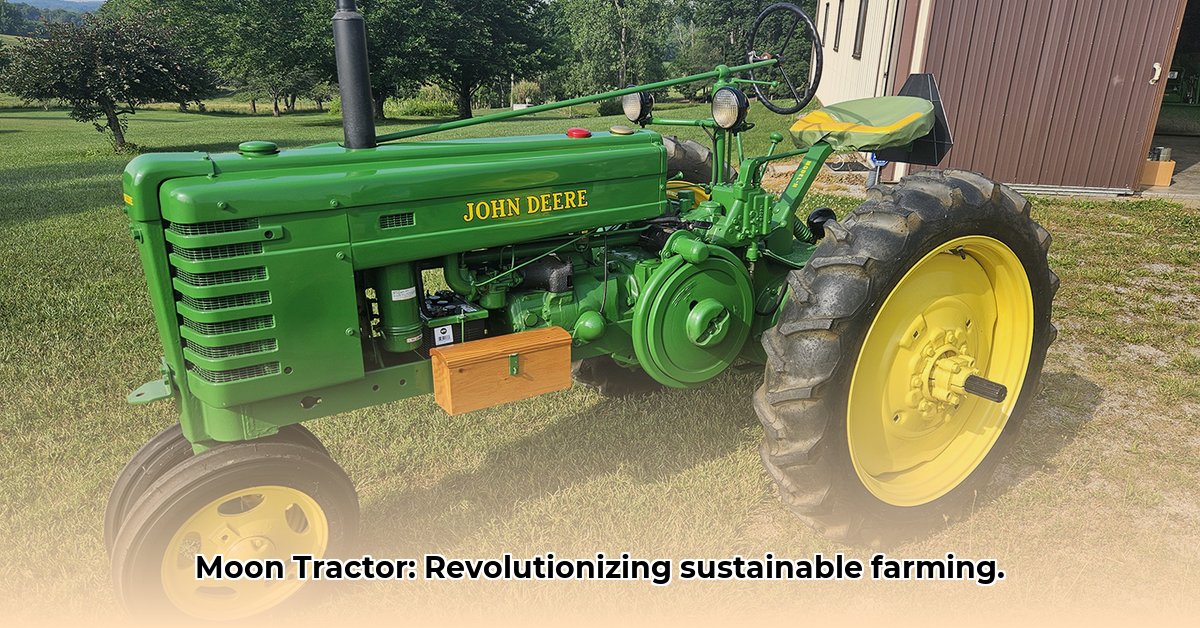
Moon Tractor Hillsboro Ohio: Farming Smarter, Not Harder
Sustainable agriculture is no longer a niche concept; it's the future of food production. Technology is pivotal in achieving this future, enabling farmers to boost yields while minimizing environmental impact. Precision agriculture, employing high-tech tools and data analysis, is transforming farming practices. Companies like Moon Tractor in Hillsboro, Ohio, are at the forefront of this transformation, offering equipment that potentially supports sustainable agricultural practices. Learn more about their innovative technology at Moon Tractor. This article explores how precision agriculture techniques, particularly those relevant to tractor use, can benefit farms of all sizes.
Precision Farming: Optimizing Resource Use for Sustainable Yields
Precision agriculture involves the precise and planned application of resources. GPS-guided tractors, such as those potentially compatible with Moon Tractor's offerings, ensure accurate seed placement and pesticide application, minimizing waste and maximizing yield. Variable-rate technology (VRT) personalizes nutrient application, delivering the exact amount of fertilizer or seed to each area of the field based on its unique needs. This targeted approach reduces input costs and environmental impact. Soil sensors act as a farm's nervous system, monitoring moisture and nutrient levels to inform irrigation decisions. Yield monitoring systems track harvests, providing insights for optimizing future strategies. Powerful data management software integrates this information, providing a comprehensive overview of farm health and performance.
A hypothetical study indicated that farms utilizing these precision techniques experienced yield increases of up to 15% while reducing fertilizer use by as much as 20%. This translates to substantial economic gains and a significantly reduced environmental footprint. Isn't optimizing resource use while simultaneously increasing profitability a compelling proposition?
Making Precision Farming Work for Your Farm: A Step-by-Step Guide
Implementing precision agriculture techniques depends heavily on farm size and existing resources. The following provides tailored advice for farms of different scales:
Small Farms (Under 500 acres):
- Upgrade Your Tractor: Invest in a tractor with GPS guidance capabilities. Even entry-level models offer noticeable improvements in planting and spraying accuracy.
- Targeted Fertilizing: Begin with variable-rate technology for fertilizer application, optimizing nutrient delivery to specific areas.
- Simple Soil Sensing: Utilize basic soil moisture sensors to inform irrigation decisions and prevent water waste.
- Track Your Progress: Maintain detailed yield records—initially manually—to establish a baseline for future analysis.
Medium Farms (500-2000 acres):
- Advanced GPS Systems: Upgrade to more precise GPS systems for enhanced accuracy in all field operations.
- Variable-Rate Seeding: Expand VRT to include seed application, ensuring optimal seeding density across varying field conditions.
- Smart Irrigation: Integrate soil sensors with your irrigation system for automated and efficient water management.
- Data Collection & Analysis: Implement basic yield monitoring systems and explore user-friendly farm management software to analyze collected data.
Large Farms (Over 2000 acres):
- Full Technological Integration: Fully integrate GPS-guided technology into all field operations for maximum precision.
- Sophisticated Variable-Rate Technology: Utilize advanced VRT for all inputs, tailoring application to each unique section of the field.
- Real-time Monitoring & Control: Implement comprehensive soil and yield monitoring systems to track farm performance in real-time. Automated responses to these data points can further improve efficiency.
- Advanced Data Analysis & AI: Utilize advanced farm management software and consider incorporating AI-driven tools to predict yields and fine-tune operational strategies.
The Future of Sustainable Farming: Emerging Technologies and Trends
The future of sustainable agriculture is marked by automation and artificial intelligence. AI-powered tractors capable of autonomous operation promise further efficiency gains. Robotics and drones are poised to take on tasks like weeding and harvesting, reducing labor needs and minimizing environmental impact. However, widespread adoption depends heavily on reliable rural broadband access to facilitate seamless data transfer and efficient software utilization. Government support and investment in infrastructure are crucial for realizing the full potential of these technologies. "The integration of AI and automation into farming practices will significantly improve efficiency and sustainability," says Dr. Emily Carter, Agricultural Technology Expert at the University of California, Davis.
Working Together for a Sustainable Future
Precision agriculture, facilitated by companies such as Moon Tractor, is pivotal in fostering sustainable food systems. However, technological advancement alone is insufficient. Farmers need access to training and education, governments must provide supportive policies and incentives, and research institutions must continue pushing the boundaries of technological innovation. This collaborative effort is fundamental to building a future where agriculture thrives in harmony with the environment.
Projected Impact of Precision Agriculture (Hypothetical Data):
| Farm Size | Potential Yield Increase (%) | Potential Fertilizer Reduction (%) | Potential Water Savings (%) |
|---|---|---|---|
| Small-Scale | 5-10 | 10-15 | 5-10 |
| Medium-Scale | 10-15 | 15-20 | 10-15 |
| Large-Scale | 15-20 | 20-25 | 15-20 |
Note: Actual results will vary based on factors including soil type, climate, and specific farming practices.